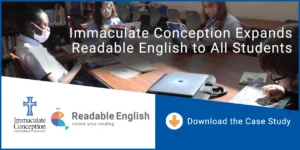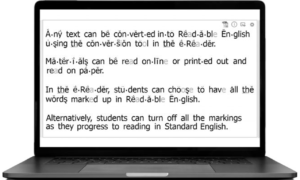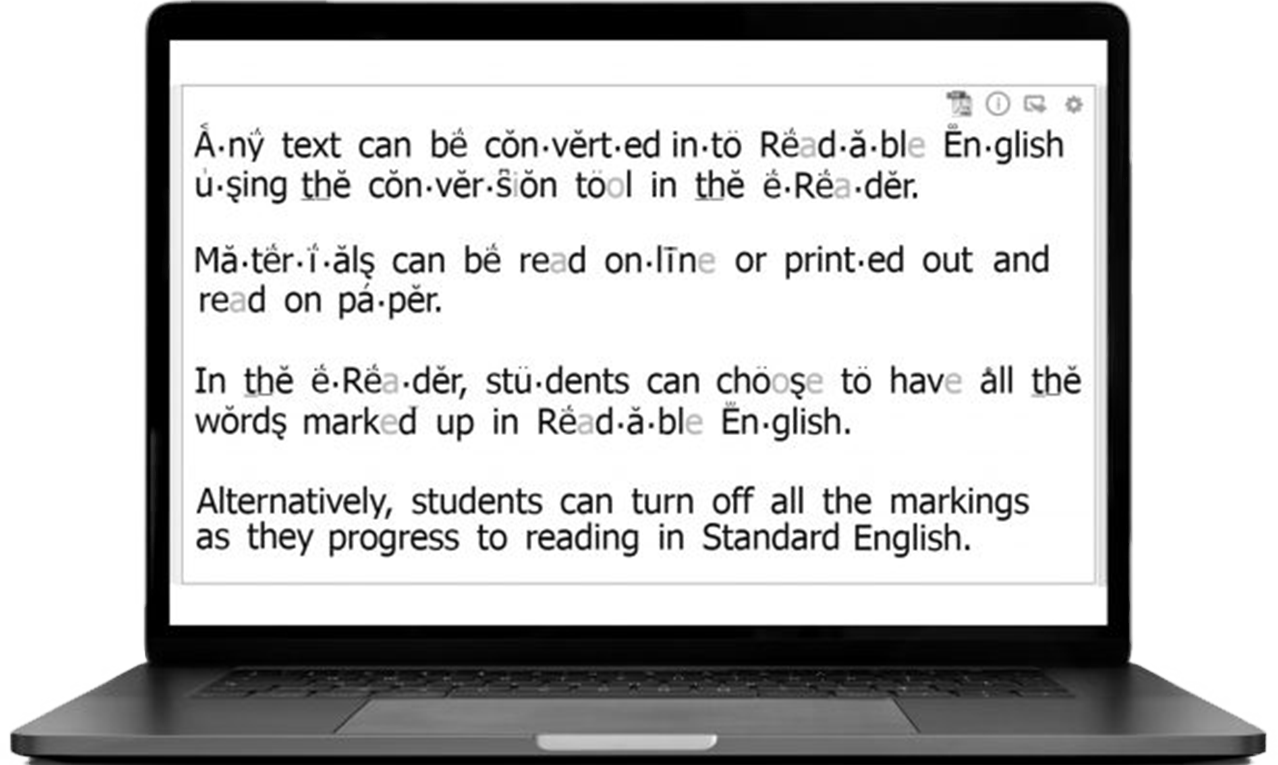Readable English is more than just a concept; it’s a key to making sure everyone understands what you write. Whether you’re crafting a blog post, a school essay, or a business email, using readable English helps your message reach your audience clearly and effectively. In this guide, we’ll explore how to use readable English to make your writing easy to understand and engaging for readers of all ages.
When you focus on readable English, you’re not just simplifying your words—you’re also thinking about your reader’s experience. This means using clear sentences, straightforward vocabulary, and avoiding complex jargon. By doing this, you make sure that your message is accessible to everyone, making communication smoother and more effective.
What Is Readable English and Why It Matters
Readable English is all about making your writing easy for everyone to understand. When we talk about readable English, we mean using simple words, short sentences, and clear ideas. This helps people of all ages and backgrounds to get the message quickly without getting confused.
Why does readable English matter? Because it ensures that your readers or listeners can follow along without struggling. Whether you’re writing a story, an article, or a school report, clear and simple English makes sure your points come across effectively. It’s important for good communication and helps everyone stay on the same page.
Readable English also helps to keep the reader interested. When the writing is easy to follow, readers are more likely to stay engaged and understand your message better. This is especially useful in our busy world where people have limited time to read and process information.
Simple Tips to Improve Your Readable English
Making your English readable is easier than you think! Here are some simple tips to get started:
- Use Short Sentences: Break up long sentences into shorter ones. This makes your writing easier to follow.
- Choose Simple Words: Avoid using big, complicated words when smaller ones will do. This helps to keep your writing clear.
- Be Direct: Get to the point quickly. Avoid adding extra details that might confuse the reader.
Another great tip is to use active voice instead of passive voice. Active voice makes your sentences more dynamic and straightforward. For example, say “The cat chased the mouse” instead of “The mouse was chased by the cat.”
Lastly, use bullet points and lists when you can. These help to organize your information and make it easier to scan. This way, readers can quickly pick out the key details.
Common Mistakes to Avoid for Better Readable English
To make sure your English is readable, it’s important to avoid common mistakes. Here are a few to watch out for:
- Avoiding Jargon: Using technical or specialized words can confuse readers who aren’t familiar with them. Stick to everyday language when possible.
- Overloading with Information: Too much information in one sentence or paragraph can overwhelm readers. Keep it simple and focused.
- Using Complex Sentences: Long, complex sentences can be hard to follow. Break them into smaller, clearer parts.
Another mistake to avoid is not proofreading your work. Mistakes in spelling or grammar can make your writing hard to read. Always check your work before sharing it with others.
Finally, be careful with your tone. Writing in a tone that is too formal or too casual can impact readability. Aim for a balanced, approachable tone that suits your audience.
Tools and Resources for Writing in Readable English
There are many tools and resources available to help you write in readable English. Here are some of the best ones:
- Readability Checkers: Tools like the Hemingway Editor or Grammarly can help you see how easy your writing is to read. They highlight long sentences and suggest simpler alternatives.
- Writing Guides: Websites like Purdue OWL offer tips on writing clearly and effectively. These guides can help you learn more about making your English readable.
- Grammar Checkers: Tools like ProWritingAid can spot errors and suggest improvements. They help ensure your writing is both correct and clear.
Using these tools can make your writing process smoother and help you create content that is easy to understand. Regularly using readability tools can also improve your writing skills over time.
How Readable English Can Boost Your Communication Skills
Using readable English can greatly enhance your communication skills. When your writing is clear, people understand your message better and more quickly. This is especially helpful in both personal and professional settings.
Readable English makes it easier for others to follow your ideas and stay engaged. In professional settings, clear communication can lead to better teamwork and fewer misunderstandings. For students, readable English can improve academic performance by making assignments and essays more effective.
By focusing on readable English, you also build your confidence as a writer. Knowing that your message is easy to understand helps you communicate more effectively and connect with your audience.
Examples of Readable English in Action
Let’s look at some real-life examples of readable English. Here’s how you can apply it in different situations:
- In a Blog Post: Use short paragraphs and simple sentences. Include bullet points for lists and make sure your ideas flow logically.
- In a School Report: Break down complex information into easy-to-understand sections. Use headings and subheadings to organize your content.
- In a Business Email: Start with a clear subject line and get to the point quickly. Use short, direct sentences and avoid unnecessary details.
Readable English isn’t just about choosing simple words. It’s about presenting your ideas in a way that’s easy for everyone to grasp. Practice these techniques to see how they can make your writing more effective.
Readable English for Different Audiences
Adjusting your writing to fit different audiences is key to effective communication. Here’s how to tailor your readable English for various groups:
For Kids:
- Use Simple Words: Choose words that children know and understand.
- Short Sentences: Keep sentences brief and to the point.
- Visuals: Add pictures or illustrations to help explain ideas.
For Teens:
- Engaging Language: Use language that resonates with a younger audience.
- Relatable Examples: Include examples that teens can relate to.
- Interactive Elements: Incorporate questions or prompts to keep them engaged.
For Adults:
- Professional Tone: Use a more formal tone but still keep it clear.
- Detailed Information: Provide enough detail to convey important points.
- Clear Structure: Organize information logically and use headings.
By adjusting your it to fit the audience, you ensure that your message is effective and engaging for everyone.
From Complex to Clear: Transforming Your Writing
Turning complex text into it can be a game-changer. Here’s how to simplify your writing:
- Break Down Information: Divide complex ideas into smaller, manageable parts. This makes it easier for readers to understand.
- Use Simple Language: Replace technical terms with everyday words. This helps to clarify your message.
- Avoid Overloading: Don’t cram too much information into one section. Spread it out to avoid overwhelming your readers.
Transforming your writing involves more than just using simple words. It’s about making sure your ideas are presented clearly and logically. Practice these tips to improve the readability of your texts.
The Role of Readable English in Education and Business
Readable English plays a big role in both education and business. In schools, clear writing helps students perform better in their assignments and tests. It makes it easier for teachers to assess their understanding and provide feedback.
In the business world, it improves communication between colleagues and clients. Clear emails, reports, and presentations can lead to better decision-making and fewer misunderstandings. By focusing on it, both students and professionals can enhance their communication skills and achieve greater success.
Conclusion
Readable English is super important for making sure everyone understands what you’re trying to say. By using simple words and clear sentences, you help your readers get your message without any confusion. This makes communication easier and more effective, whether you’re writing for school, work, or just for fun.
So, next time you write something, remember to keep it clear and straightforward. It doesn’t have to be complicated to be good. With readable English, you’ll make your writing shine and your readers will appreciate it!
FAQs
Q: What is readable English?
A: it means using simple words and short sentences so that everyone can easily understand what you’re writing.
Q: Why is readable English important?
A: It helps make sure your message is clear and easy to understand, which is important for good communication in both personal and professional settings.
Q: How can I improve my readable English?
A: Use short sentences, choose simple words, and avoid complicated jargon. Tools like readability checkers can also help.
Q: Can readable English be used in all types of writing?
A: Yes, it can be used in essays, emails, blog posts, and more. It helps make your writing clear no matter the context.
Q: Are there tools to help with writing in readable English?
A: Yes, tools like Hemingway Editor and Grammarly can help you check the readability of your writing and suggest improvements.








